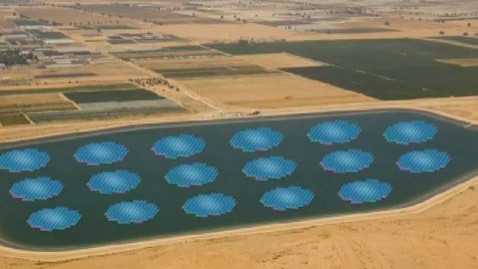One of the potentially limiting characteristics of solar power is the fact that it takes up a lot of space. Solar panels obviously aren't going to be of much use if they're stacked one on top of the other, so instead must be spread out side-by-side, so each one can soak up the sun's rays. Although they're generally not in the way when mounted on top of buildings, large arrays of solar panels could start to become a hindrance when located on the ground. Tech companies from Israel and France, however, are developing what could be a way of avoiding that situation – floating solar panels that are installed on the surface of existing bodies of water.

Called AQUASUN, the system is the result of a collaboration between Israel's Solaris Synergy and the French EDF Group. The panels themselves utilize silicon cells, which are less expensive than other types, but also prone to inefficiency caused by overheating. Due to a cooling system that incorporates the water on which they're floating, however, overheating is said not to be a problem in this case. A system of mirrors that concentrates the sun's rays onto the panels reportedly boosts their efficiency further, reducing the number of panels needed and thus helping to lower costs even more.
In order to tailor the power output to their requirements, users could add or remove panels as needed – each modular panel reportedly produces 200 kW of electricity.
The system would not be installed on the open ocean or in ecologically-sensitive areas, but instead on reservoirs already in use for industrial or agriculture purposes. Even then, the panels are designed to allow oxygen to permeate through them, so that the water underneath won't become stagnant. In some cases, the panels could even help reduce evaporation and excess algae growth.
A prototype has already been built, and showcased at the 4th International Eilat-Eilot Renewable Energy Conference in Israel. The designers are now planning on installing it for a nine-month test period on a basin at a hydro-electric facility in southeast France, this September. They hope that by June of 2012, after observing the performance of the prototype through different seasons and water levels, they will have gathered sufficient data to make the system ready for the commercial market.
